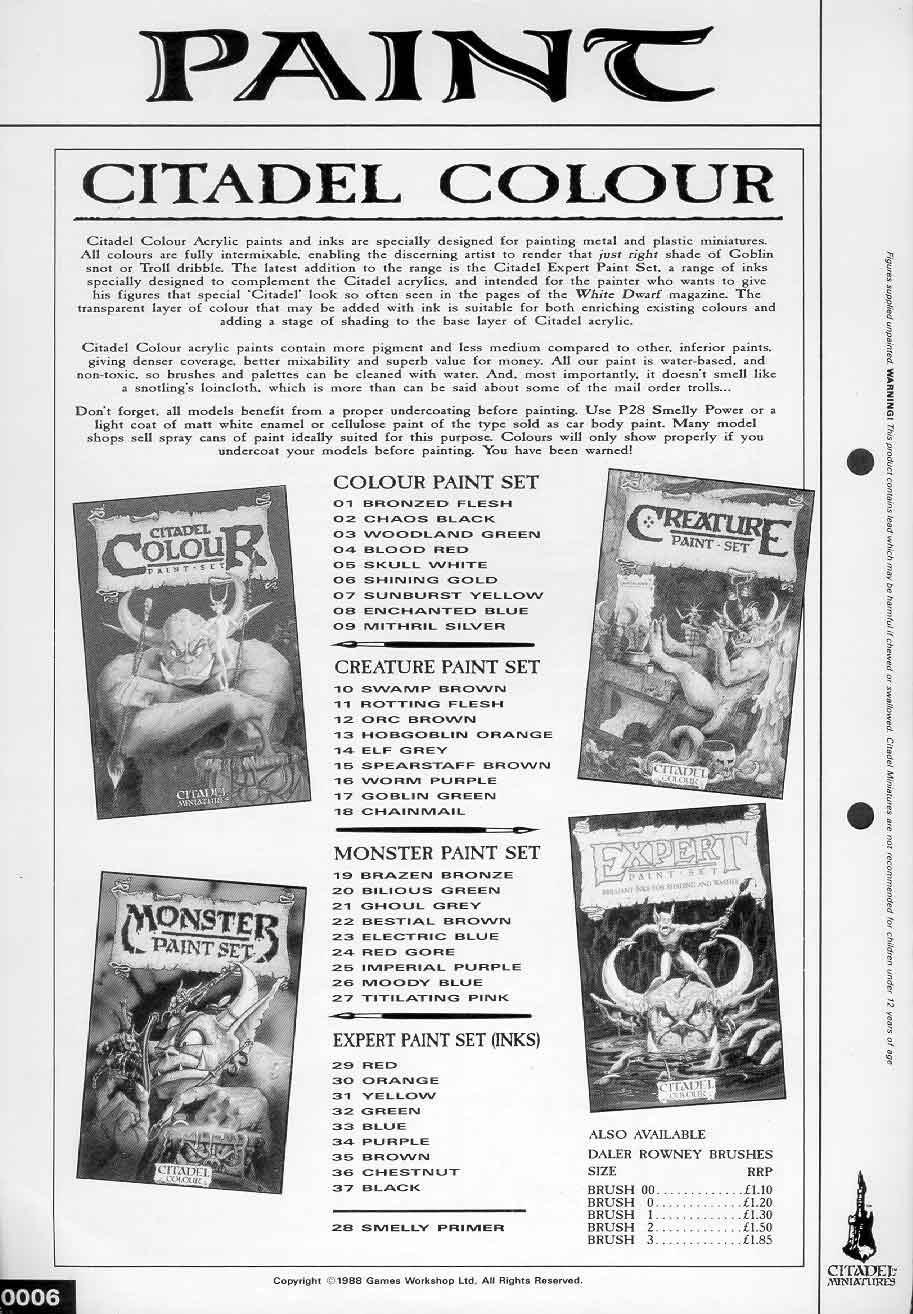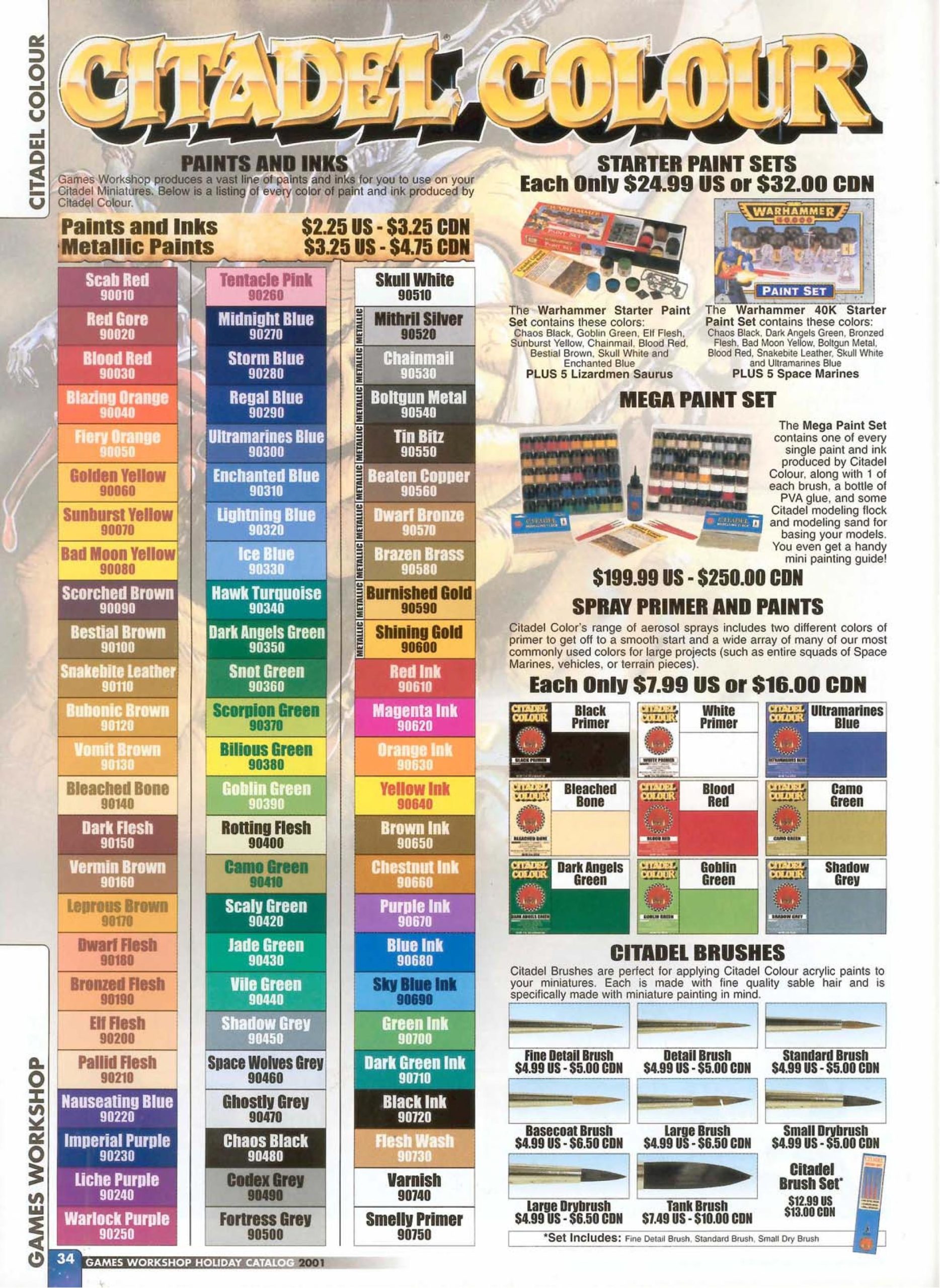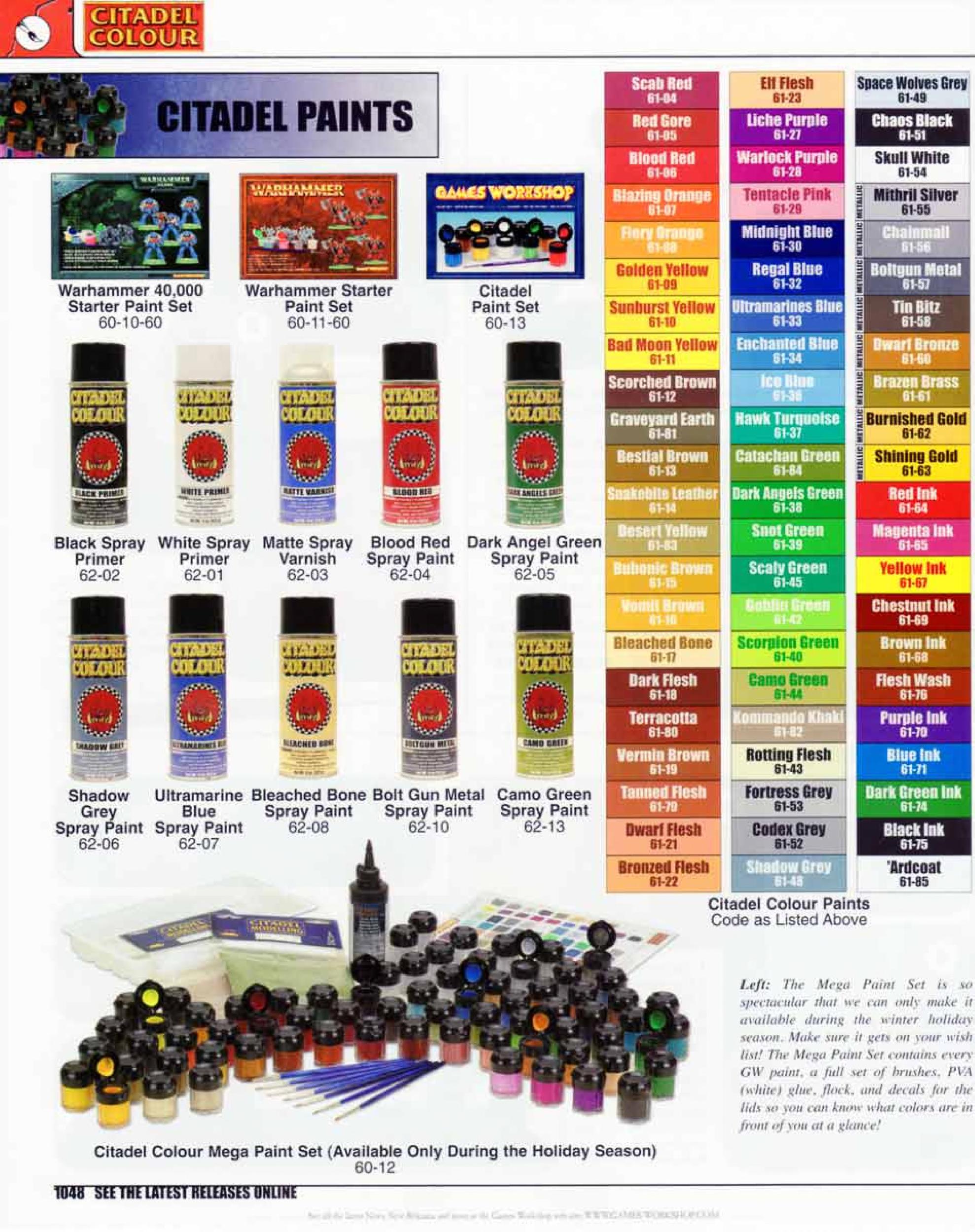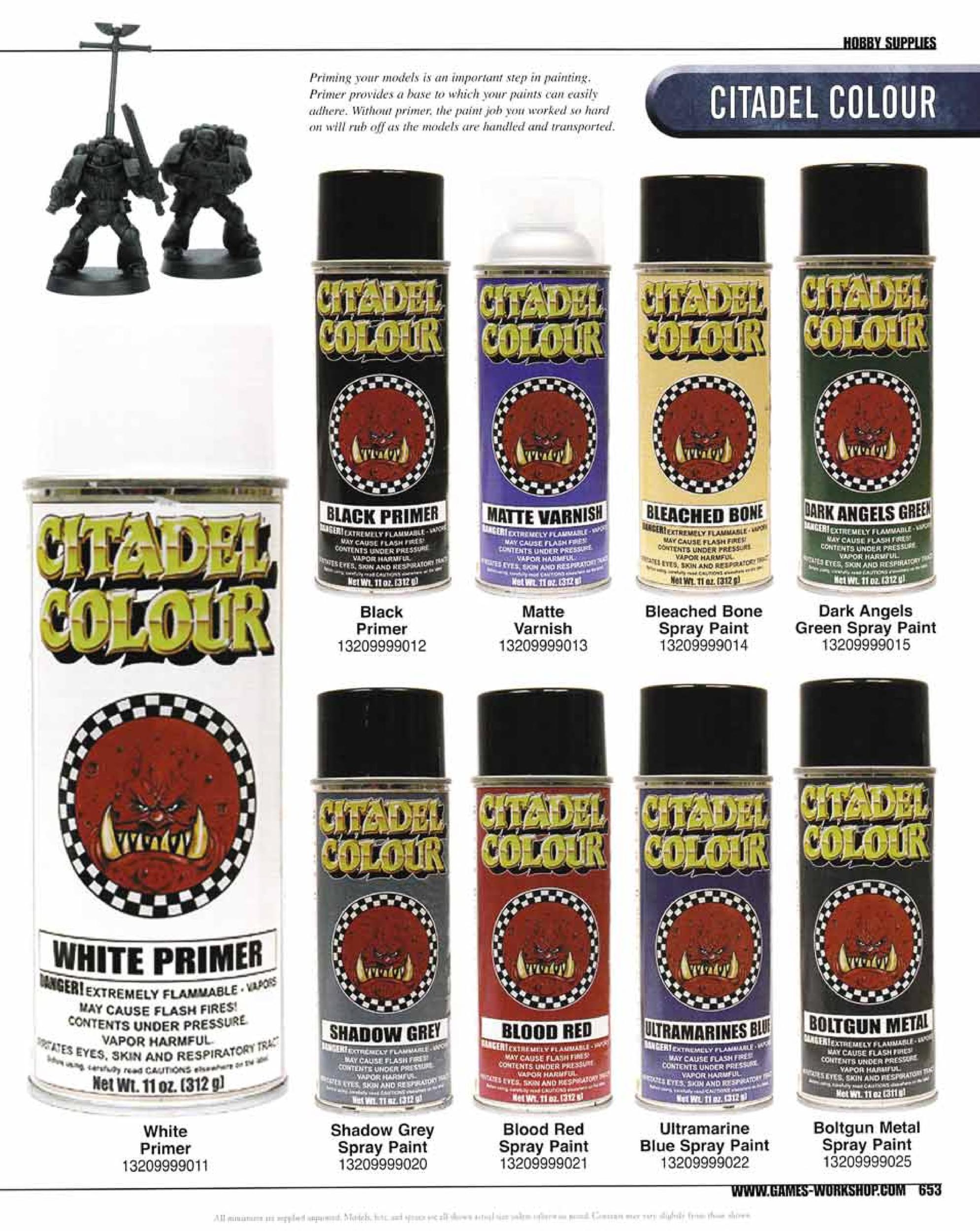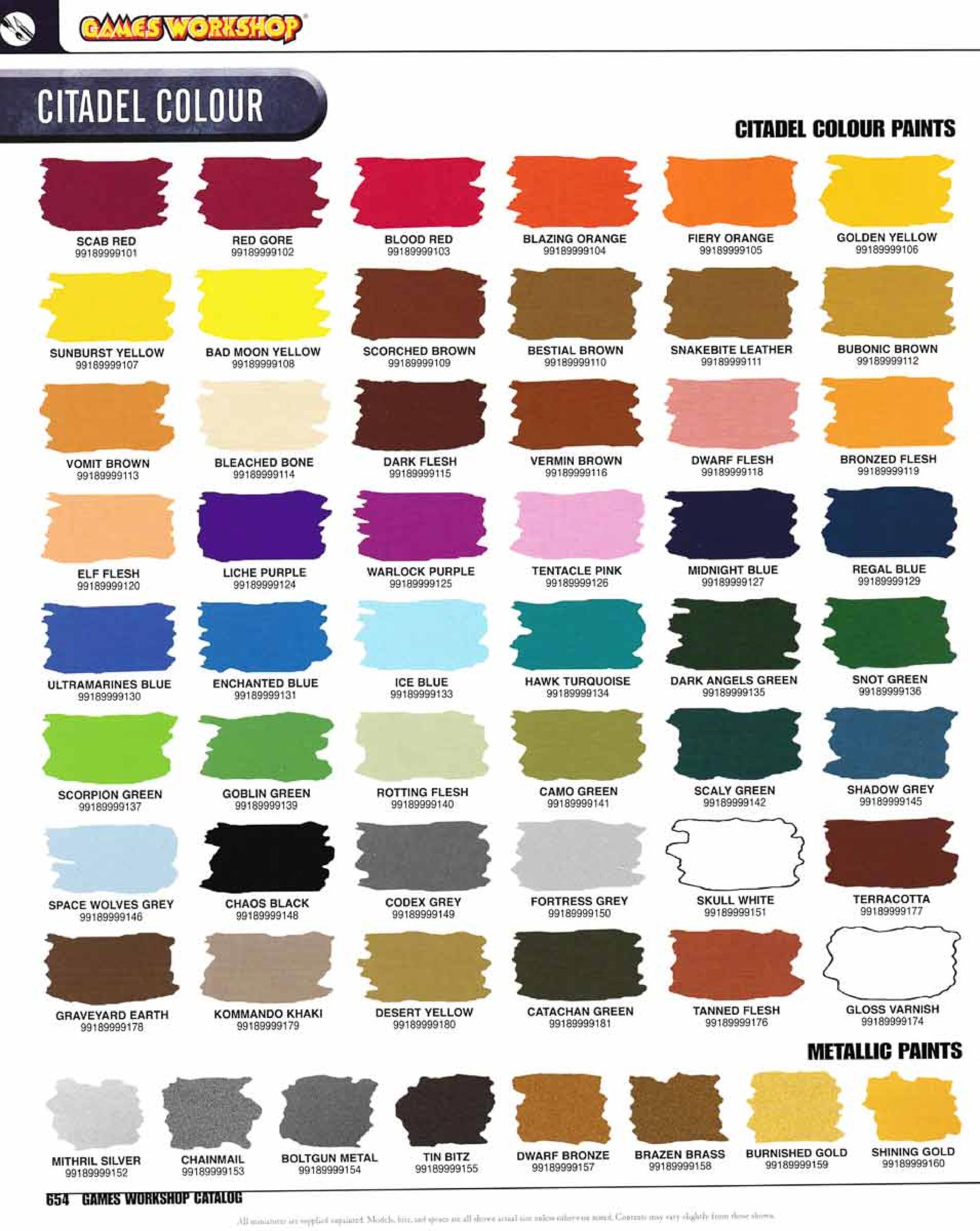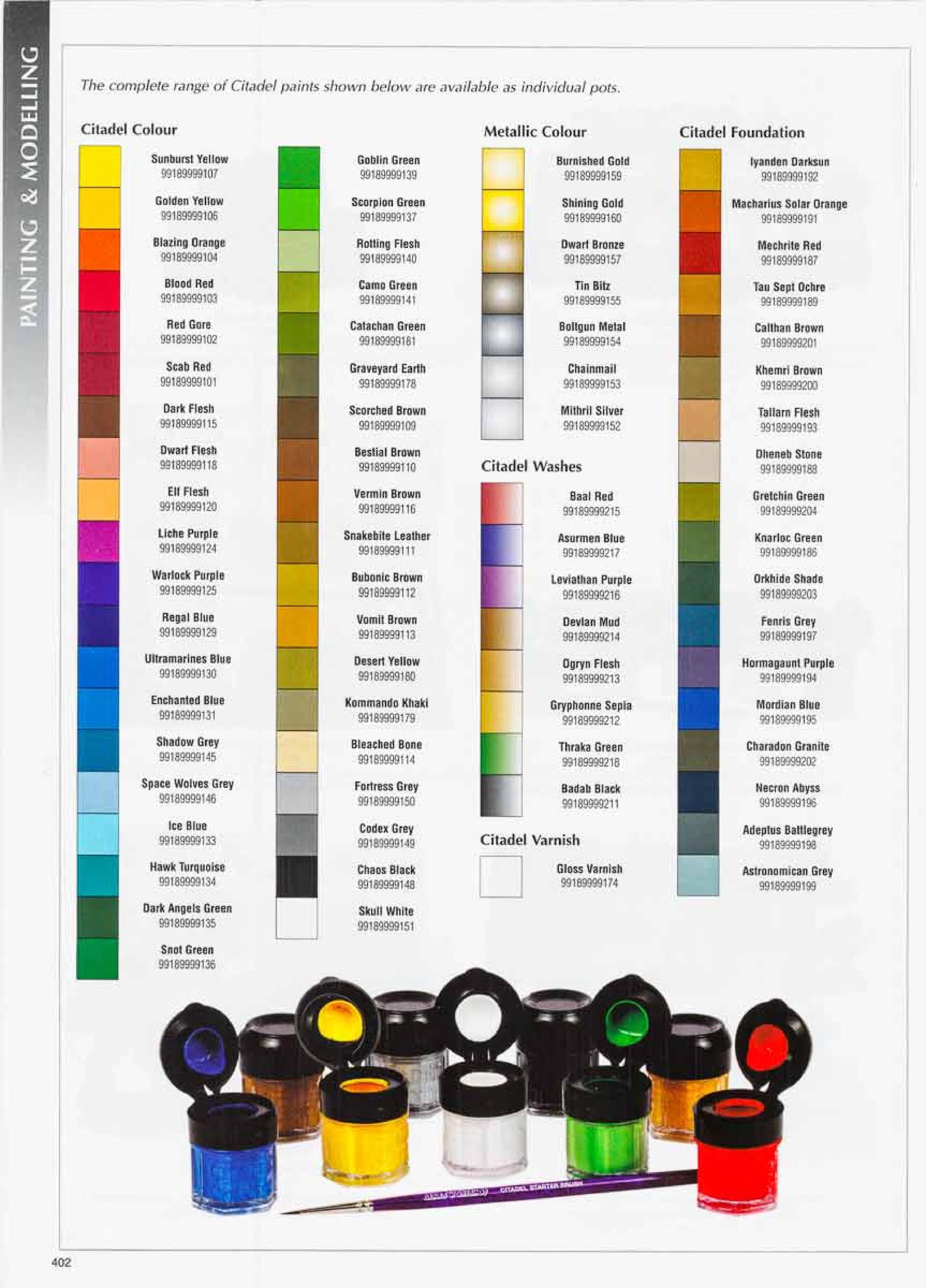The Games Workshop Company has an unstable paint range that is constantly changing and it’s a bit confusing for beginners to understand how to use. It’s not as complicated as it seems however.
Below is a chart of some of the Citadel range as it was offered at one time. I pulled off the chart off the internet, but I changed the format to png and modified it overlaying more clear text and I made color swatches from samples pulled from the Games Workshop website so they should be more accurate than the original jpg.
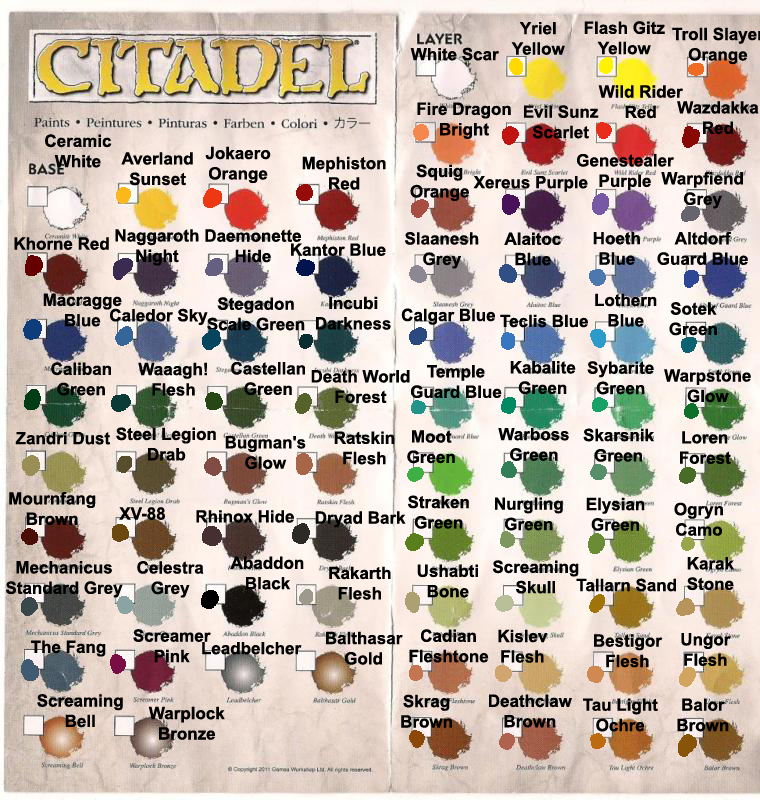
Understanding the distinction between base and layer paint is the beginning point for understanding the citadel system.
Most of these colors are still offered while they offer much more than this now, but take note of how the range is separated into base colors and layer colors. These two types of paint are the basic kinds of paint you will need to buy if you want to use some of the paints from the Citadel range, but don’t know where to start.
Base colors are opaque paints that are good to lay down during the beginning stages of model painting. They can serve as a primer if no other primer is available, but it’s best to use actual primer first since primer is specially formulated to stick to the model better than any paint, but the base color known as Corax White which isn’t shown on this chart is an example of a Citadel paint that works well both as a primer and a standard base color. The most similar color on this chart is Ceramic White.
Layer colors on the other hand are semi-transparent and are best for the middle and later stages of model painting during which the last layer of paint being laid down should still show some of previous layers of color underneath it.
A lot of beginners complain about the poor coverage of a particular brand paint not understanding that the pigment type more than anything else determines it’s coverage. Miniature paints in general have more than sufficient pigmentation. So if a green paint for example isn’t covering well it’s probably not a result of insufficient pigment, but rather the wrong kind of pigment being used for a particular purpose. Paint from another brand is not going to cover much better if the same type of pigment is used to make the paint. By making small color swatches on a piece of card stock or by painting the tops of your paint pots or the tops of your paint dropper bottles before you try to using them on a model you’ll be able to tell whether a paint is very opaque or semi-transparent. You’ll also know the color of the dried paint and the dried finish type (like whether it’s a matte, gloss, semi-gloss, or satin finish). But in the Citadel line it’s easier to distinguish which colors will be opaque or semi-transparent because of the labels marking them as base and layer paints.
Citadel also offers paints in spray cans. Many of these are base colors so they can serve as primers when necessary, but since Citadel stopped offering Corax White in a spray can they don’t offer a true primer in white anymore. The durability, model adhesion, and subsequent layers of paint adhesion of the current brighter white spray paint they offer just isn’t the same. They switched to enhance the bright effect of their contrast paint, but in so doing sacrificed too much. Why they couldn’t offer both is beyond me. What can I say except that they are insane as their Corax White spray was amazing and the only spray primer I really liked.
Citadel also offers paints labeled as Air. Those are designed to pass easily through an airbrush with a minimum amount of extra thinning.
Citadel also offers Shade Paints which are just washes which are paints that darken the recesses of the model with minimum effort.
Citadel also offers Technical Paints which are basically special effects paints like those you’d use to make fake snow, dirt, bile, blood and other nasty stuff.
Citadel also offers Contrast Paints which are the most difficult kind of paint to explain. In essence they are inks, but with a matte instead of gloss finish. They can be used to quickly color a model when applied as a wash since they color the recesses darkly like a wash/shade paint does, but they also color the model where the mid-tone would normally be applied with a fairly vibrant color, but less darkly than in the recesses, while pulling away from those areas that would normally be reserved for highlights shading those only very lightly, making fast work of a basic coloring job. This is how their use is normally demonstrated, however I don’t use them that way at all.
Instead I use Contrast Paints like an acrylic watercolor. I first water prime the area I’m going to paint using only the slightest amount of water on my moist (but not wet at all) brush. And then using only the smallest amount of Contrast paint on the very tip of my still slightly moist (but not wet at all) brush I stain the model in a series of washes working from the recesses to the mid-tone towards the highlight returning to the recesses as often as necessary to get the darkness I want. The water primed layer helps to prevent spotting and tide marks forcing the paint to bleed a bit towards the outside edges as I work around it.
Since Games Workshop is a woke company I don’t recommend anybody purchase from them unless there’s something you can’t do without especially since there and there are many alternatives, but the Contrast paints are fairly unique (even though there are companies that make similar products). And I do like to use the Contrast paints for certain things, but for the most part I use Coat D’Arms paints as my main paint line. I haven’t needed to use the main Citadel paints line as my primary line for decades as the Coat D’Arms paint line is much more similar to the first generation Citadel paints than the modern Citadel paints are. I also painting with the traditional shaped paint pots over the newer designs which tend to tip over and while I’m not against dropper bottles they aren’t my preferred container as they can develop cracks easily drying the paint inside before you know it and the paint has to be thinner to flow out of them correctly. But hopefully this article will help you understand the modern Citadel system a bit better. I may write a follow up to explain their coloring guides a bit more, but that’s all for now. Here are more samples of the old paint ranges.

